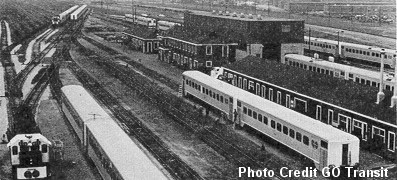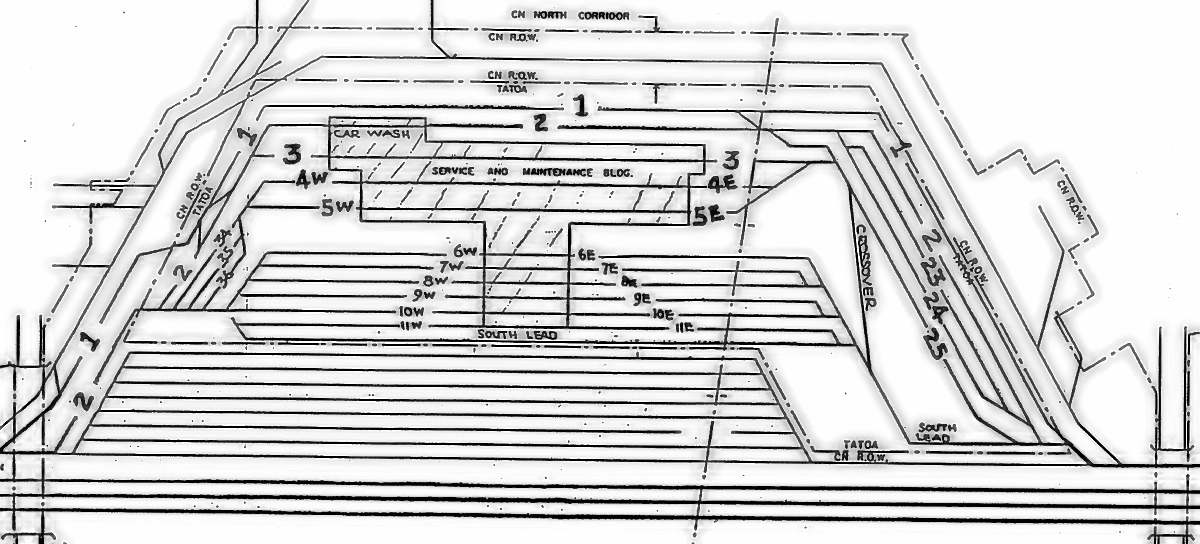| Willowbrook Yard 1967 |  |
| Willowbrook Yard is the Maintenance Depot for all GO Transit operating rail equipment. It is located in the City of Toronto's west end (Etobicoke) and just north of the Canadian National Railway's Oakville Subdivision (between mileage 6.8 and 7.8). It is adjacent to the CNR Mimico Station. Willowbrook occupies the land used by the CNR car repair track which was left vacant when the CNR opened up Toronto Yard in Maple. The Maintenance Depot is under the direct supervision of an Equipment Foreman. The Yard itself consists of a repair shop, cleaning, maintenance, and storage tracks for diesel and coaches. The eastern shop track limit is located on the shop track lead approximately 150 feet east of the east ladder track switch. The western shop track limit is located on the shop track lead approximately 3,400 feet west of the west ladder track switch. All movements on shop tracks must be governed by speed restriction signs located east and west of the shop track leads. Communication contact point is the Equipment Foreman's Office radio which set on continuous monitoring. Willowbrook Yard contains three separate operating yards: the North, the south, and Storage Yards.
|

| Because of the tremendous success of GO Transit's performance, routes, and supportive programs, the Toronto Area Transit Operating Authority (TATOA) realized that improved facilities were required at the Willowbrook GO Yard. As a result of considerable consultation with Canadian National Railways, the City of Etobicoke and its residents in the area the following upgrades were made effective:
|


| WILLOWBROOK YARD OPERATIONS (2002) |
DEPARTURE
|
ARRIVAL
|
YARDING AT WILLOWBROOK
|
| The 'BUBBLE' - 1980 TO CURRENT The 'Bubble' is the heart of GO Transit's commuter operations. As part of the Toronto Area Transit Operating Authority (TATOA) modernization program in 1980, the original centre was retired which had been in operation since 1967. The 'bubble' is designed to handle the increased commuter traffic with CNR personnel covering the area 24 hours a day with double coverage during rush hour traffic. This new facility provides a direct communication link between TATOA, the CNR and CPR railway police, GO Transit security, and Toronto Terminals Railway (TTR). There are five commuter service supervisors who make immediate decisions about train operations and GO facilities and structure. The Commuter Services Supervisor reports directly to the Superintendent of GO Operations. This supervisor is responsible for monitoring all phases of GO operations for CNRail and CPRail and provides online supervision and decision making for train crews. Instructions are issued to train crews from the 'bubble' under constant radio and cell phone communication. The Duties of the Commuter Services Supervisor include, but not in order: |
| BATHURST STREET NORTH YARDING (2002) The following procedures are observed at BSNY: |